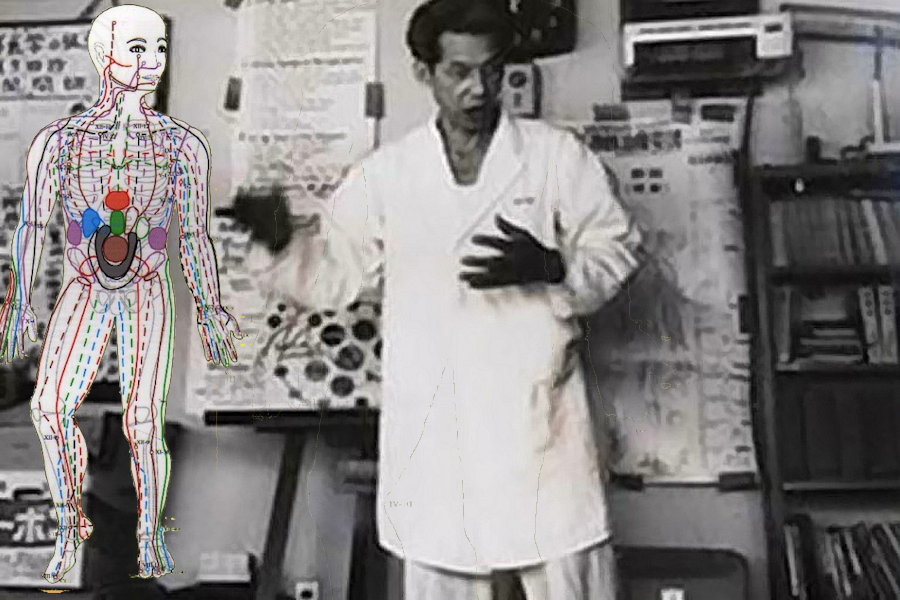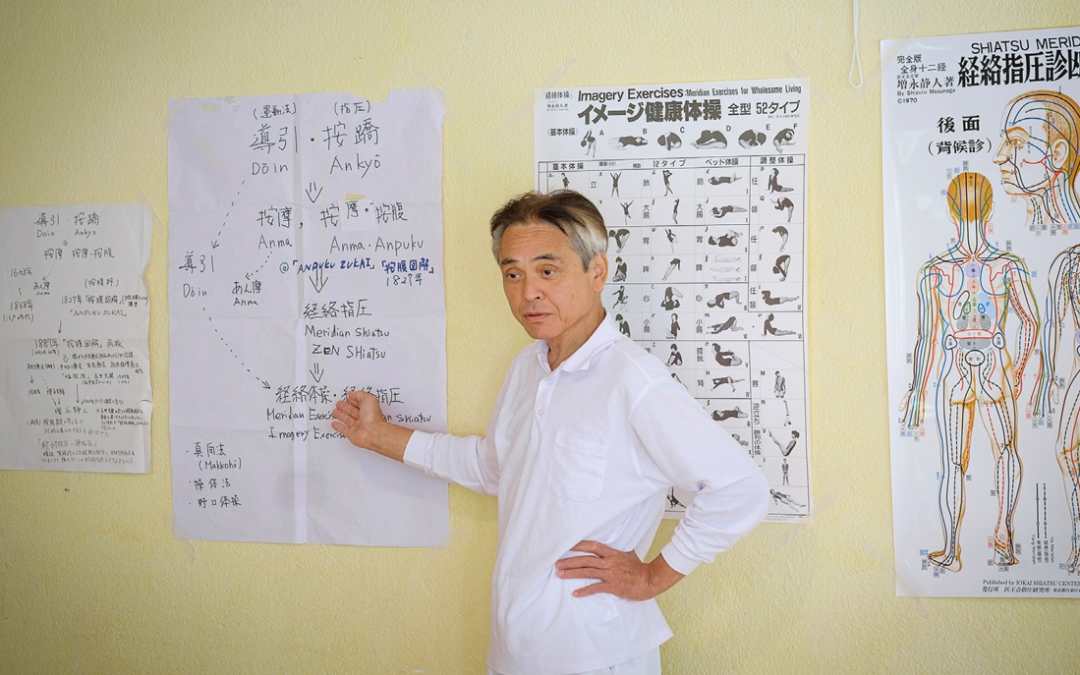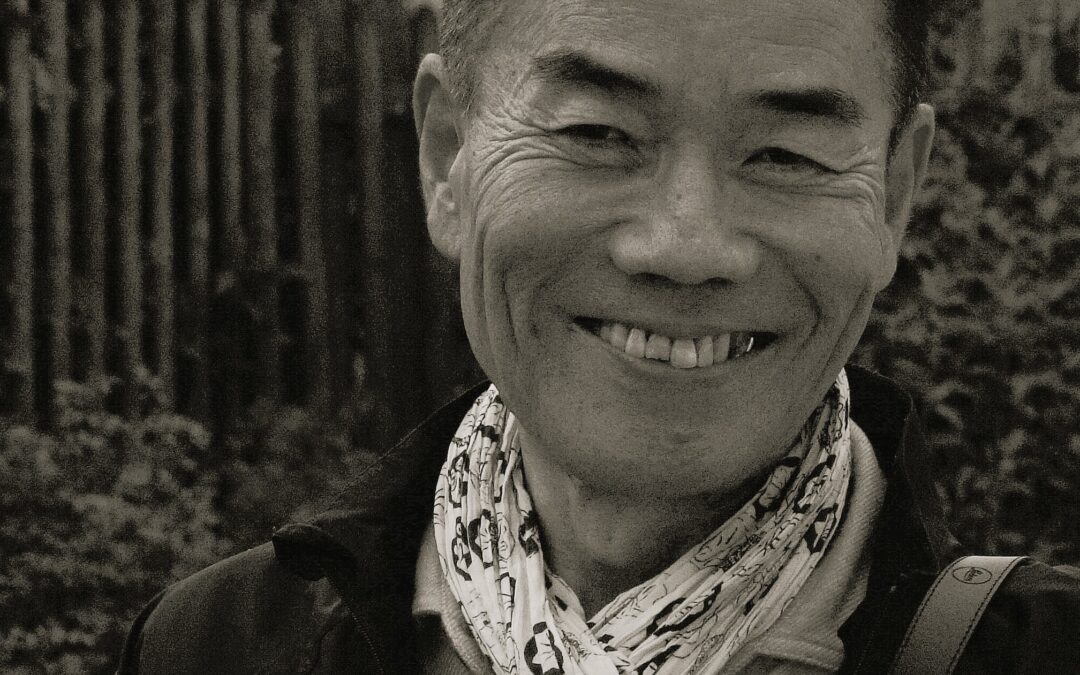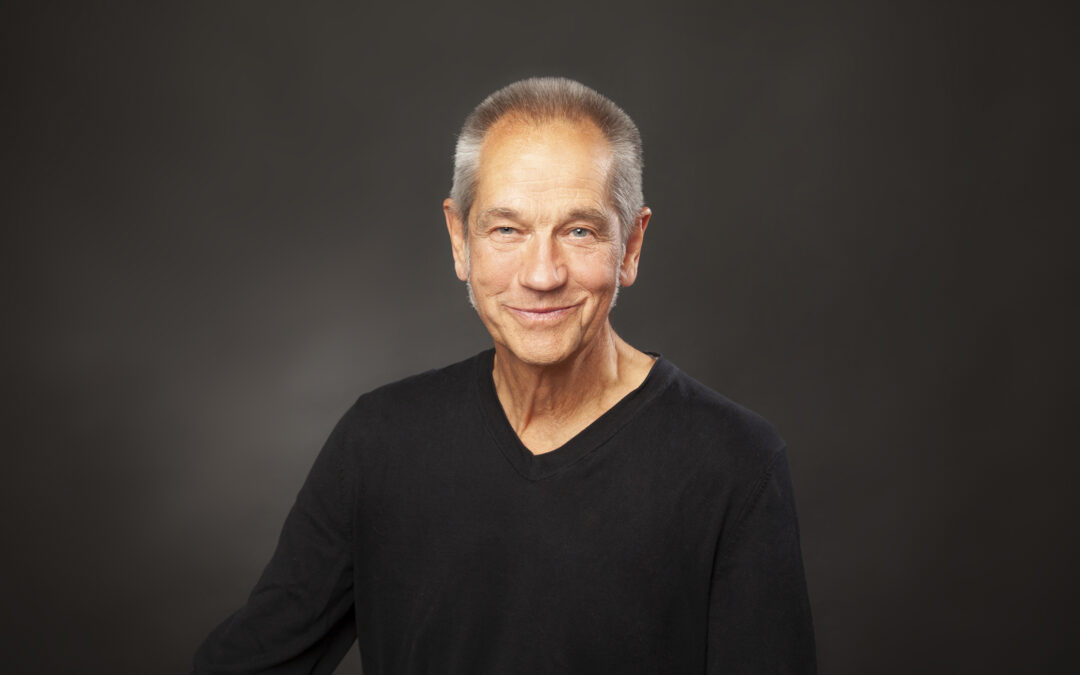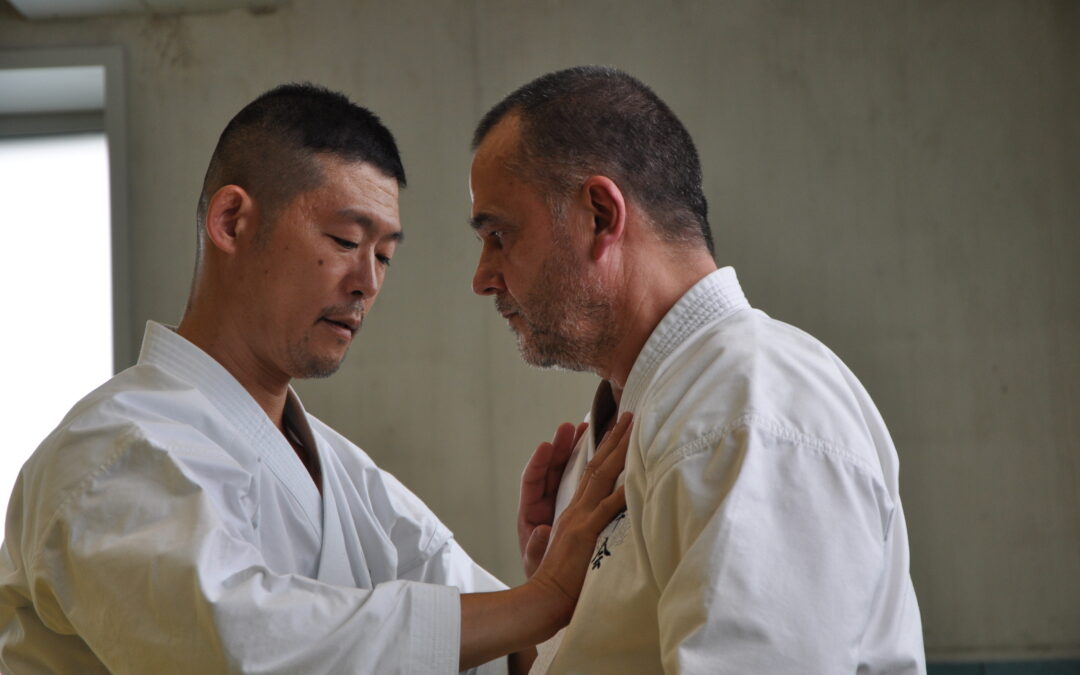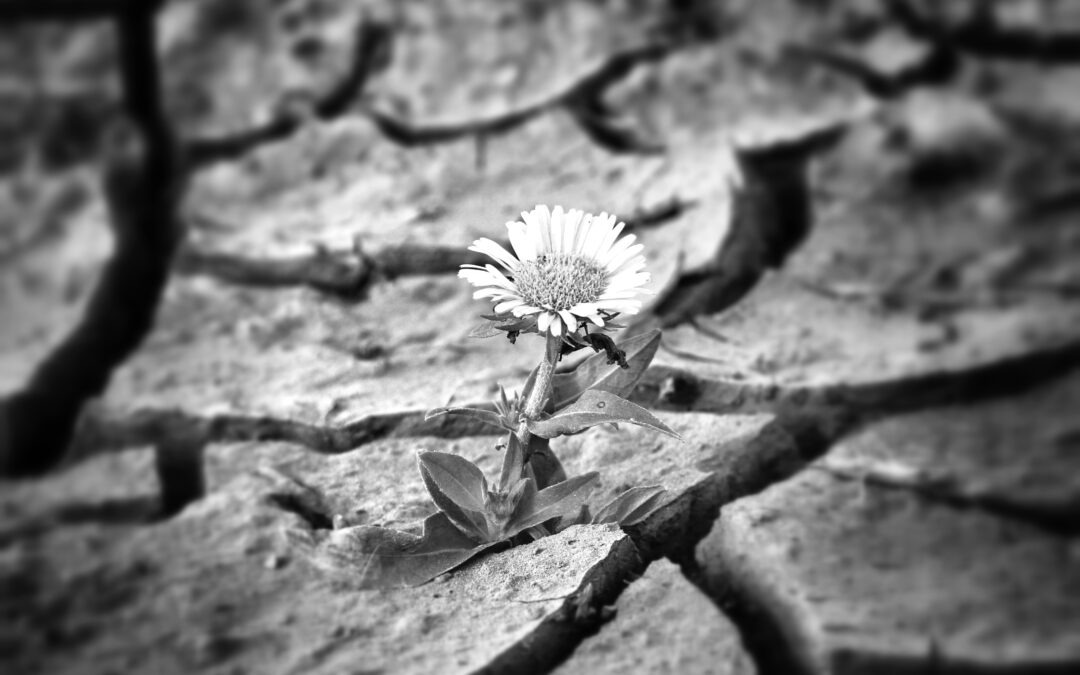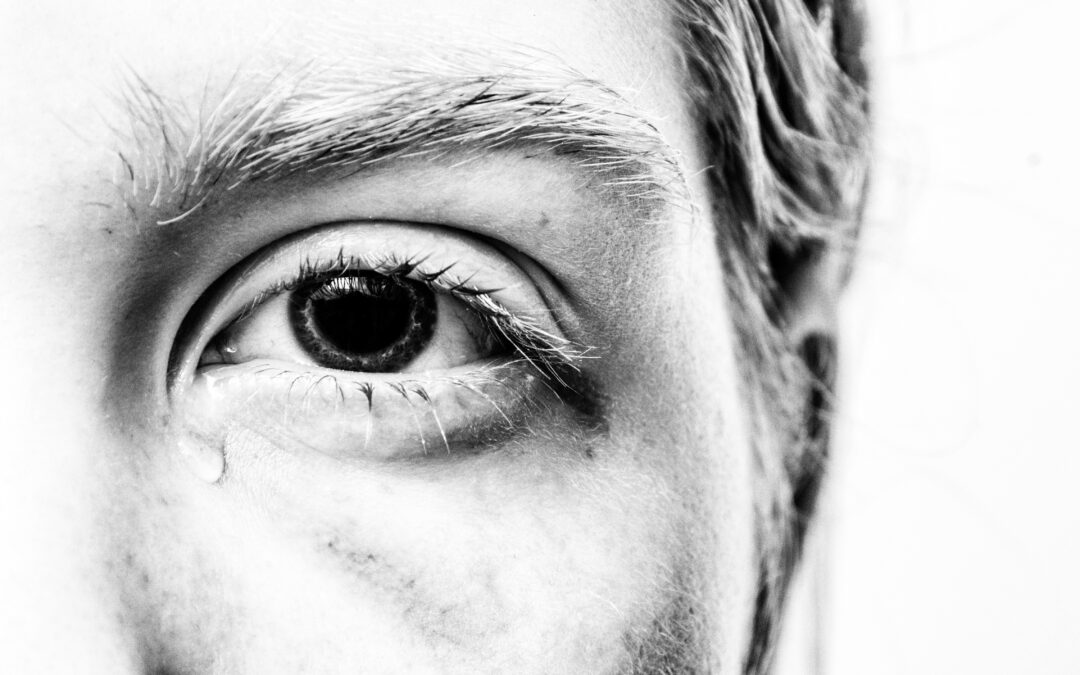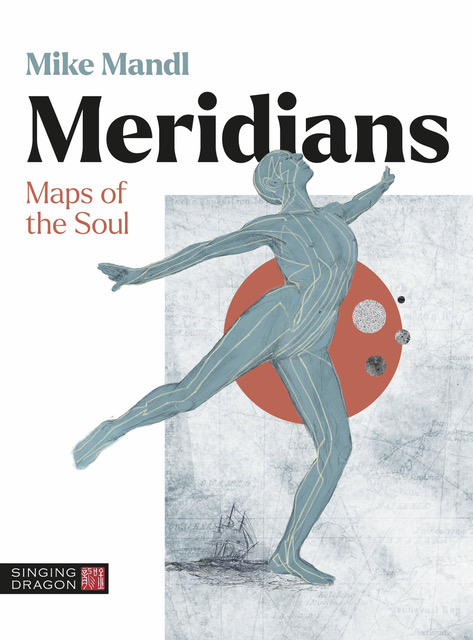In this second installment on the work of Shizuto Masunaga (see part. 1: a genius on shoulders of giants), Chris McAlister explores and analyzes one of the the foundations of Masunaga’s work and thinking – his extended meridian system, including how he understood their functions, nuanced their locations and created extensions.
Masunaga’s Creation: a synopsis of a synthesis
We might contend that Masunaga re-introduced some of the major philosophical and practical tools from traditional Oriental medicine into the existing framework of Shiatsu as it then was. We may even argue that the new style, once established, represented a complete overhaul of the existing therapy, including as it did certain vital aspects derived from the West – some superficial and others more integral.
Masunaga made several startling changes to the Shiatsu he inherited. In the following section we will identify and explore four key areas of innovation that distinguish the new style. Each, in its own way, helped to establish Zen Shiatsu as a robust newcomer with firm foundations and a will to survive, prosper and make a lasting contribution to the integrated field of health and consciousness.
- He re-emphasised the importance of ki, vital energy, and reincorporated the basic concept of the meridian system, even extending the traditional pathways for ease of use by bodyworkers. These are usually referred to as Masunaga’s extended meridians.
- He updated the old system of zones for abdominal (hara) diagnosis, and also mapped out diagnostic zones on the back of the body.
- He developed a simple diagnostic system, one based on the traditional concepts of kyo and jitsu, comparable to Xu and Shi in Chinese medicine, and roughly translatable as “deficiency” and “excess”.
- Finally, and perhaps most importantly, he revolutionised the practice of Shiatsu. This he did through two major contributions. Firstly, he introduced the concept of “natural pressure”. Secondly, he developed an entirely new kata or form. This consisted of fluid movements and ergonomic postures designed to create pressure and stretch-openings using not only thumbs but also palms, elbows, knees and feet.
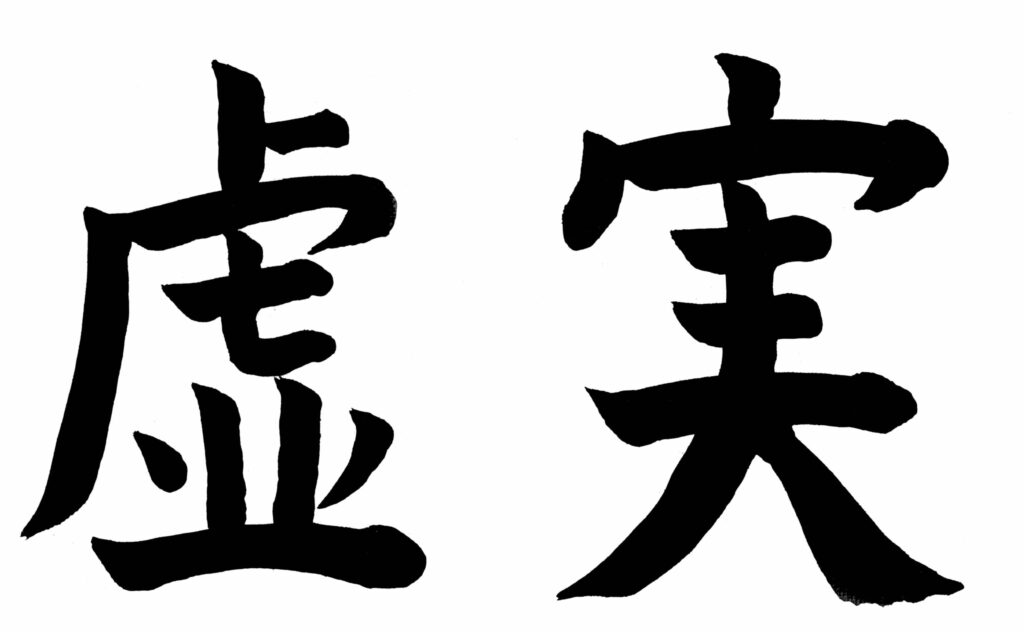
Calligraphy by Yuji Mori (C)
We will examine the kata in more detail further on but can usefully summarise its total effect as follows: treating the whole body by using the whole body. The kata Masunaga developed is both practical and pragmatic, offering as it does the possibility of treating in a way that enhances the flow of energy in the practitioner’s own body.
In all of this, Masunaga combined concepts and practices primarily from the storehouses of traditional Oriental medicine, and also from the various schools and branches of Western medicine, science and philosophy. In the following pages we will explore each of these four areas of innovation in turn, each under its own heading.
Meridians in Zen Shiatsu: Location and Function
When Masunaga learnt Shiatsu at Namikoshi’s instution it was without the use of meridians in either theory or practice . A system of “points” or “tsubos” did exist, but these were purely symptomatically employed, and though useful practically, not arranged in any conceptually enlightening manner.
Masunaga was at pains to point out that the mere pressing of points would never achieve long lasting or satisfactory results, as this quote from “Zen Shiatsu” eloquently testifies:
“The common conception that Shiatsu is no more than the application of strong digital pressure on single points on the body misrepresents the truth. Shiatsu is based on a full oriental medical system, which explains the human body in terms of a network of meridians through which flows an energy called Ki.“
Indeed, Zen Shiatsu was even referred to by its pioneer practitioners as “Meridian Shiatsu”.
Meridian Location according to Masunaga
A parallel and contemporaneous development in Japan was the Meridian Therapy movement in acupuncture. Oriental medicine in Japan had for many years undergone a crisis which had resulted in a loss of traditional tactile skills and a consequent over-reliance on point prescriptions.
The legendary Yanagiya Sorei, along with his his colleagues and students, instigated a vigorous return to study of the classical texts of Oriental medicine, especially the Nan Jing [1]. Their stated aim was to revitalize acupuncture through a return to careful treatment of the meridians according to the age-old theories of the five elements, paying specific and rigorous attention to pulse and abdominal diagnosis, as well as meridian and point palpation. The same kind of trend can be seen in the Toyo Hari acupuncture movement founded by Fukushima Kodo in 1959.
Masunaga submitted the traditional meridian system to a similar kind of intense scrutiny in his clinical work, by means of point-by-point and zone-by-zone palpation and observation of micro-function. However, not content with utilizing the traditional pathways of the meridians, as the Meridian Therapy acupuncturists did, Masunaga extended the meridians, using the traditional pathways as his basis but extending each meridian to new areas.
Simply put, Masunaga’s innovation consists of two parts. Firstly, all meridians have their origin in the Hara or abdomen. Secondly, the traditional arm meridians were provided with pathways on the legs, while the traditional meridians of the legs were now also to be found on the arms.
In practice, this latter innovation means that a bodyworker can always reach any meridian at any time, no matter where on the body s/he happens to be working. For example, a practitioner is working with a diagnosis or treatment plan that calls for the inclusion of both the Spleen meridian and the Small Intestine meridian. Using the traditional meridian system, this would entail working with the channel and points on the leg and torso for the Spleen and, separately, on the arm and shoulder for the Small Intestine.
In Masunaga’s new extended system (see diagrams below), the practitioner is able to work on both meridians on the legs or both on the arms at the same time. Furthermore, it makes no difference whether the treatment is being carried out in the prone, supine, side or seated position – all the meridians are always available to the bodyworker schooled in the extended meridian system of Zen Shiatsu.
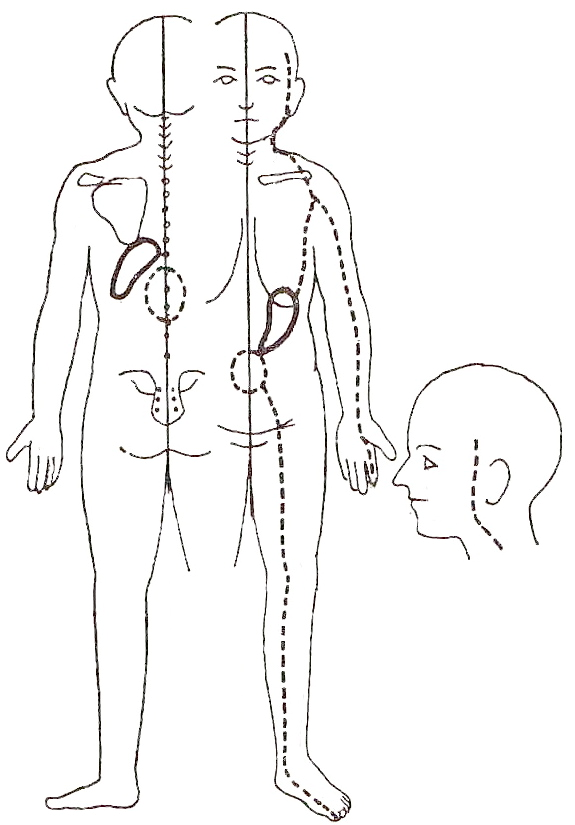
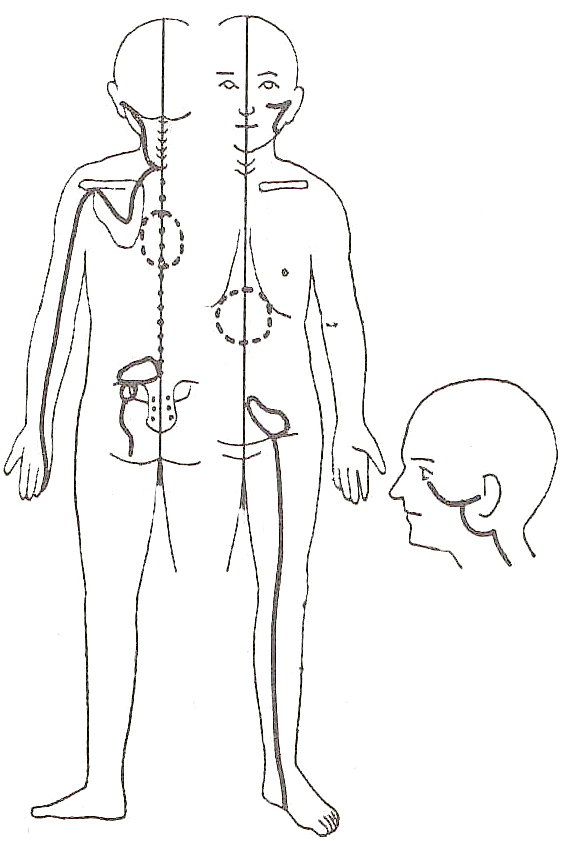
At first glance, Masunaga’s meridian chart can appear rather intimidating. Even practitioners already familiar with the traditional meridians of Chinese medicine might experience an initial feeling of bewilderment.
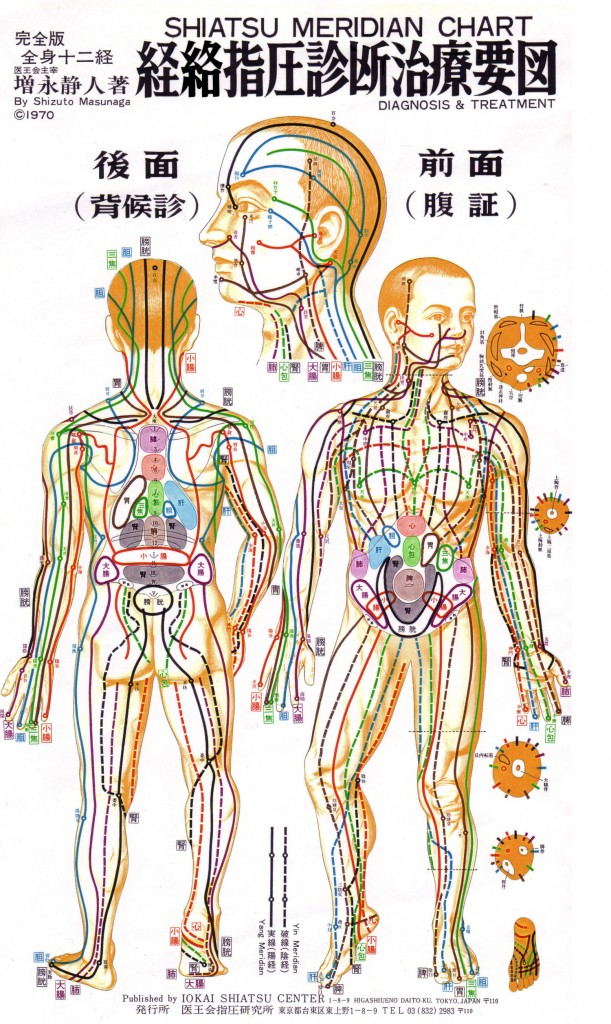
A useful technique in navigating the chart is to begin with the traditional pathways and work from there. The following section will therefore involve a detailed breakdown of Masunaga’s meridian chart in relation to traditional acupuncture meridian mapping.
We might, for example, choose to chart the Large Intestine meridian (solid grey lines). Being a yang meridian, it retains its traditional pathway running from index finger along the radial portion of the forearm and upper arm, the frontal area of the shoulder, via the neck and jaw to the opposite nostril. None of this is new to the student or practitioner familiar with traditional meridian pathways.
What is new is the branch which originates in the Large Intestine zone in the lower back and runs between the Gall Bladder and Bladder meridians along the lateral, dorsal aspect of the thigh, calf and foot, ending finally in the pads of the foot together with its yin partner, the Lung. Another new but fairly logical addition is the branch which arises in the Lung zone in the upper, lateral area of the abdomen and rises to meet the traditional Large Intestine meridian on the shoulder at LI 15.
Similar considerations apply to the Small Intestine meridian (solid, dark red lines). Its traditional pathway is retained, running as it does from the little finger along the ulnar aspect of the arm, via the elbow, shoulder blade and posterior aspect of the neck to the cheek and ear.
Additionally, there is a logical extension from the shoulder blade down the lateral aspect of the back, shadowing the Bladder meridian (solid blue lines), its Tai Yang or Greater Yang six division* partner, and entering the Small Intestine zone in the lumbar area.
There is even a small branch originating in the zone for the ovaries in the lower back and running down proximally to the traditional site of the Small Intestine and Bladder Shu points on the sacrum. This micro-branch serves, incidentally, to highlight the close connection in Zen Shiatsu theory between the Small Intestine meridian and the functions of the female reproductive organs.
Continuing with the Small Intestine meridian, the final and most controversial addition originates logically enough in the Small Intestine lower abdominal zone. Somewhat less logically, it then continues down the medial portion of the thigh and lower leg, running parallel with the traditional Spleen meridian. This Small Intestine extension finally curves around under the instep to unite with its yin partner in the Fire element, the Heart meridian (broken dark red lines).
An interesting feature in the current context of these two yang meridians, is that Masunaga chose to make abundantly clear a phenomenon which is often only implicit in traditional meridian charts – along with all their fellow yang meridians, both make a significant detour to converge at GV 14 at the base of the neck, below the seventh cervical vertebrae. This serves to emphasize the node-like nature of this area of the body, and mark it out as a key centre of yang energetic activity, an aspect of traditional Oriental medical theory Masunaga chose to make explicit and visibly underline.
A general point of interest regarding the chest and throat area on the chart is that many of the internal branches from the traditional pathways are here lifted to the surface. This applies specifically to the yin meridians, especially Heart and Pericardium (broken red lines), but also Kidney (broken blue lines) and Lung (broken grey lines).
Another point of interest for meridian buffs is the broad sweep of the Gall Bladder meridian (solid green lines) around the posterior and medial aspect of the shoulder blades. Thus does Masunaga provide us with his personal answer to the mystery of the exact pathway of the Gall Bladder channel between GB21 and 22.
A certain amount of discussion has revolved around the similarity or otherwise of Masunaga’s extensions to the ancient Six Divisions or combined meridian pathways mentioned above. Previously, we have named the Tai Yang (Bladder and Small Intestine) combined channel from the classical six divisions meridian model.
If we examine the leg extensions of the Large Intestine and Small Intestine meridians, we observe no similarity whatsoever with the dynamics of the Six Divisions. Indeed, the Small Intestine extension is located on the medial aspect of the leg – traditionally the exclusive domain of the yin meridians.
However, if we instead consider the Triple Heater extension in the leg (solid red lines), we will find it running immediately parallel to the Gall Bladder, its partner in the Shao Yang division. Similarly, the Pericardium sits tightly parallel to the Liver, the other half of the Jue Yin unit. In the case of the Spleen extension in the arm (broken yellow lines), we may note its close proximity to the Lung, its Tai Yin six division partner.
The Heart extension in the leg is in the medial and posterior portion, exactly where its Shao Yin partner Kidney traditionally flows. The effect is somewhat spoiled however, by Masunaga’s new placement of the Kidney where the traditional outer Bladder line is usually to be found; not entirely illogical of course, but enough to spoil any possible exactness of overlap with the Six Divisions system.
Indeed, if we look closely at each and every one of the extensions of the Zen Shiatsu system, we find that exactly half are in a location which could be said to match a plausible Six Divisions setting. The question then becomes whether fifty per cent is sufficient to sustain such a weighty comparison, and is the exercise thus, in the end, a fruitful one? This may ultimately depend on the glass half-full or half-empty conundrum…
Meridian Function according to Masunaga
So far, we have considered the innovations Masunaga made to the meridian system with reference to anatomical location of specific pathways. Conceptually, Masunaga also redefined the functions of the meridians, while also re-incorporating the ancient nomenclature of the meridians as “officials” from the classic Nei Jing.
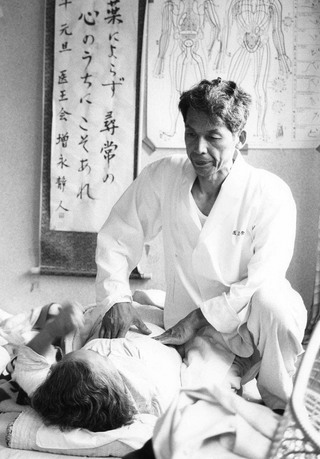
For example, he re-stated that the traditional office of the Heart meridian was that of Emperor. He then however, went on to define in modern terms what this would imply with regard to function:
“The heart meridian converts the input from the five senses into appropriate internal responses and thus controls the whole body as the center of ki and blood.”
Contrast this with the traditional description from the Nei Jing as rendered by Wang Ju Yi and Jason Robertson in their text “Applied Channel Theory in Chinese Medicine” from 2008:
“The heart holds the office of emperor and is the issuer of spirit clarity”
Another example from the same text, “Zen Imagery Exercises”,may serve to illustrate this point even more clearly:
“The kidneys and bladder from the standpoint of Chinese medicine, include the function of the adrenals and the autonomic nervous system, as well as that of the reproductive organs.”
This may well be the most glaring example of a helpful attempt to elucidate through updated terminology, the effect of which, however, is instead to distort and obscure.
Compare with the definition first given in the Nei Jing, again courtesy of Wang and Robertson:
“The kidney holds the office of forceful accomplishment and is the issuer of wondrous talent.”
What we see in these quotes from Masunaga can be understood as an attempt to modernise the ancient and arguably obscure definitions of meridian function as laid down in the ancient texts. We may, however, regard the attempt as less than entirely convincing, and it might perhaps be observed that the risk of modernising is often that of over-simplification, thereby excluding the depth of nuance embedded in the more poetic and necessarily diffuse language utilised by the ancients.
We might also remind ourselves that to translate medical systems – to explain one in terms of another – is a risky and ambitious undertaking. Realms of subtlety may easily be neglected, and gross oversimplifications become the norm, notwithstanding that the exercise may in itself be a useful and enlightening one for the individual practitioner.
(To be continued)
Notes
[1] Huangdi Bashiyi Nanjing (Chinese: 黃帝八十一難經; ‘The Huang Emperor’s Canon of Eighty-One Difficult Issues’), also called Nan Jing.
Author
- Shizuto Masunaga: his way of diagnosing – part.3 - 31 May 2023
- Shizuto Masunaga (part 2): His Creation - 9 January 2023
- Shizuto Masunaga (part.1): a genius on shoulders of giants - 6 October 2022
- The Blackened Pot - 15 June 2022
